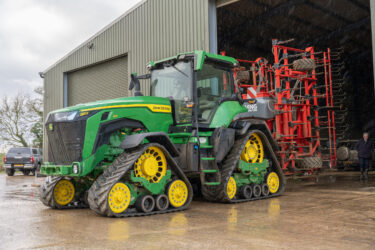Capital allowances – Super-Deduction becomes Full Expensing

The March 2023 Budget was a little light in terms of anything specific to rural businesses, but perhaps that’s not a bad thing and with a general election on the horizon, unsurprising that there were very few wide-reaching changes announced.
However, one of the items included, in line with the Chancellor’s aims to grow the economy, is the “Full Expensing” scheme for capital allowances, this replaces the super-deduction that ceased on 31 March; such that from 1 April 2023, the purchase of new and unused plant and machinery will likely be eligible for 100% tax relief through capital allowances in the year of acquisition and, like the super deduction, there is no limit to the amount that can be claimed in a single financial year.
Unfortunately, also like the super-deduction, this is only available for companies, so for the vast majority of farming businesses which are conducted through a partnership or as a sole trade, you will have to make do with the Annual Investment Allowance (AIA) for qualifying purchases, but with the limit for AIA being maintained at £1m per year, this is probably sufficient for most farming partnerships.
It’s not all good news for companies though, the Chancellor also confirmed that from 1 April, for companies with taxable profits exceeding £250,000, the tax rate would increase to 25%, if taxable profits are below £50,000 then the rate remains at 19%, profits that fall between these thresholds are taxed at a marginal rate of 26.5%.
Increasing input prices and a “stalling” crop market is continuing to put pressure on business cash flows, this is probably the main reason behind the question of “how do the capital allowances change if equipment is acquired on hire purchase?” Simply put, there is no difference provided the asset is brought into use in the financial year of acquisition. However, if the asset has not been brought into use in the year, then allowances can only be claimed on the amounts paid towards the machine by the year end, the remaining allowances can be claimed, but not until the following year when the asset is put to work. So overall nothing should be lost, but it can mean a significant timing difference of when the tax relief is applied. As always, effective planning for the timing of purchases can yield significant tax benefits.

